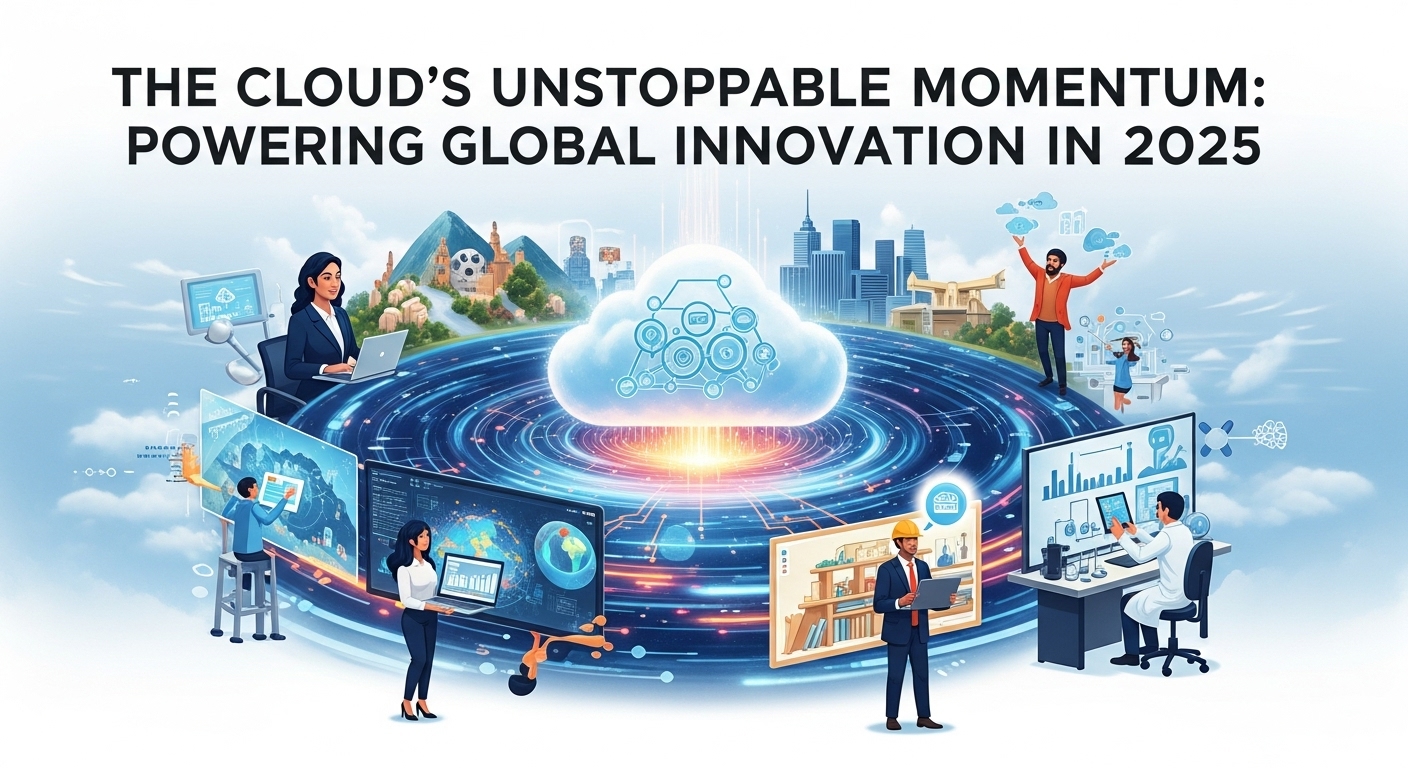The term “cloud” has moved beyond buzzword status to become the invisible, yet indispensable, infrastructure powering nearly every digital interaction in 2025. It signifies the on-demand delivery of computing services – from servers and storage to databases, networking, software, and advanced analytics – over the internet. Instead of owning and maintaining complex, expensive physical infrastructure, individuals and organizations rent these resources from third-party cloud providers, paying only for what they consume. This utility-like model has fundamentally reshaped global business operations, personal productivity, and the very fabric of digital innovation.
Defining the Cloud: Service and Deployment Models for a Connected World
The cloud is a vast network of remote servers housed in data centers worldwide. These servers run the software and databases that allow users to access files and applications from almost any internet-connected device, eliminating the need for local storage and physical servers. Cloud computing is broadly delivered through three primary service models:
- Software as a Service (SaaS): The most common model, offering fully functional applications directly over the internet (e.g., Google Workspace, Salesforce, Zoom). Users simply access and use the software without managing any underlying infrastructure. SaaS is projected to account for a significant portion of public cloud spending in 2025, reaching approximately $300 billion.
- Platform as a Service (PaaS): Provides a comprehensive environment for developers to build, run, and manage applications without the complexity of managing the infrastructure below them. PaaS is projected to grow by 22% in 2025.
- Infrastructure as a Service (IaaS): The most fundamental layer, offering virtualized computing resources like virtual machines, storage, and networking. Users have more control over their operating systems and applications, while the provider manages the physical hardware. IaaS is experiencing strong growth, projected to increase by 25% in 2025, reaching an estimated $106.04 billion.
These services are deployed across various cloud models:
- Public Cloud: Services offered over the internet by third-party providers, shared by multiple organizations (e.g., AWS, Microsoft Azure, Google Cloud). Highly scalable and cost-effective. By 2025, 96% of companies are expected to use public cloud services.
- Private Cloud: Dedicated infrastructure used by a single organization, offering greater control and security, either on-premises or hosted by a third party. 84% of companies are anticipated to use private cloud services, with the private cloud market estimated at $132.59 billion in 2025.
- Hybrid Cloud: Combines public and private clouds, allowing data and applications to move between them for flexibility. Hybrid cloud deployments are now the norm, with 82% of organizations using such setups, and the hybrid cloud market forecast to reach $134.22 billion by 2025.
- Multi-Cloud: Utilizing services from multiple public cloud providers, often to avoid vendor lock-in or leverage best-of-breed features. 92% of companies are expected to adopt multi-cloud strategies by 2025.
The Unstoppable Ascent: Benefits Driving Cloud Adoption in 2025
The cloud’s rapid expansion is fueled by its compelling advantages:
- Cost Efficiency: Eliminates the need for significant upfront capital investment in hardware, software, and data centers. Organizations pay only for the resources they consume, transforming capital expenses into operational ones. End-user spending on public cloud services is forecast to hit $723.4 billion in 2025, a 21.5% increase from the previous year, highlighting this shift. Cloud computing can save IT infrastructure expenses by 30-50%.
- Unmatched Scalability and Agility: Resources can be rapidly scaled up or down to meet fluctuating demand, ensuring optimal performance during peak times without over-provisioning or under-provisioning. This “elasticity” allows businesses to launch and run projects more quickly, reducing time to market. 75% of enterprises are focusing on developing cloud-native applications.
- Accessibility and Mobility: Data and applications can be accessed from anywhere, at any time, on any internet-connected device, fostering remote work, global collaboration, and business continuity.
- Enhanced Reliability and Disaster Recovery: Leading cloud providers build highly resilient infrastructures with redundant systems and automated backups across multiple data centers, significantly reducing the risk of data loss and downtime compared to typical on-premises solutions. Hybrid cloud solutions are projected to improve disaster recovery times by 40%.
- Faster Innovation and Development: Developers can quickly provision resources and access cutting-edge tools (including AI/ML services), accelerating development cycles and enabling rapid experimentation with new products and services. Cloud service providers enable businesses to introduce new applications 30-40% quicker.
- Robust Security: Reputable cloud providers invest massively in state-of-the-art security measures, often exceeding what individual organizations can achieve on their own, with dedicated security teams, advanced threat detection, and compliance certifications. 94% of businesses are expected to note improvements in security after moving to the cloud. However, security complexity in multi-cloud environments remains a challenge, with 55% of respondents in a 2025 study believing cloud protection is more complex than on-premise.
- Reduced Management Burden: Cloud providers handle infrastructure maintenance, software updates, and patching, freeing up internal IT teams to focus on more strategic, value-adding initiatives.
- Sustainability: Cloud providers are increasingly prioritizing energy efficiency in their massive data centers, often leveraging renewable energy. 50% of cloud providers are expected to have carbon-neutral data centers by 2025, and energy-efficient cloud solutions are projected to reduce IT-related carbon emissions by 20%.
The Evolving Horizon: Key Cloud Trends in 2025
The cloud’s evolution is tightly intertwined with other cutting-edge technologies and emerging needs, making 2025 a pivotal year:
- AI as the Driving Force: AI and Machine Learning (ML) are not just services on the cloud; they are becoming integral to how the cloud operates. AI is optimizing resource allocation, enhancing security through intelligent threat detection, and automating complex cloud operations. Gartner predicts that by 2029, 50% of cloud compute usage will be driven by AI/ML workloads. The AI market in cloud computing is projected to reach $97.9 billion by 2025.
- Edge Computing Integration: The proliferation of Internet of Things (IoT) devices and the need for real-time processing are driving the decentralization of computing. Edge computing, which processes data closer to its source, is becoming deeply integrated with cloud platforms. This reduces latency by 60% for cloud-based applications, saves bandwidth, and enables immediate decisions for applications in smart cities, autonomous vehicles, and industrial IoT. The global spending on edge computing solutions is projected to reach nearly $261 billion in 2025.
- Digital Sovereignty: Concerns around data residency, privacy, and geopolitical control are driving demand for “sovereign cloud” services. These services aim to ensure that data remains within specific geographical boundaries and adheres to local legal frameworks, providing customers more control and addressing national security concerns. The European Sovereign Cloud Day in June 2025 highlights the importance of this trend.
- Quantum Cloud Computing: While still in its early stages, quantum cloud computing is poised to revolutionize speed and efficiency. Cloud providers are optimizing quantum algorithms for large-scale deployments, offering unprecedented computational power for complex problem-solving. Quantum computing companies alone are expected to surpass $1 billion in revenue in 2025.
- Serverless Computing Maturity: The serverless model (Function-as-a-Service – FaaS), where developers write code without managing underlying servers, continues to gain traction due to its cost efficiency (pay-as-you-go) and automatic scaling. The serverless computing market is projected to reach $25.25 billion in 2025.
- Industry-Specific Cloud Platforms: Cloud solutions tailored to vertical sectors, from healthcare to manufacturing, are rapidly gaining traction. These “industry clouds” deliver pre-built compliance, workflows, and analytics specific to a particular domain, accelerating outcomes and reducing overhead. Gartner expects that by 2029, more than half of organizations will leverage industry cloud platforms.
The global cloud computing market size is estimated at $912.77 billion in 2025, reflecting its robust growth. The “cloud” is far more than a technical term; it’s a fundamental shift in how we build, deploy, and consume technology. As its capabilities continue to expand and integrate with emerging innovations, its role as the invisible, indispensable fabric of our digital world is only set to grow stronger, empowering businesses and individuals globally to innovate, connect, and thrive in an ever-more interconnected future.

